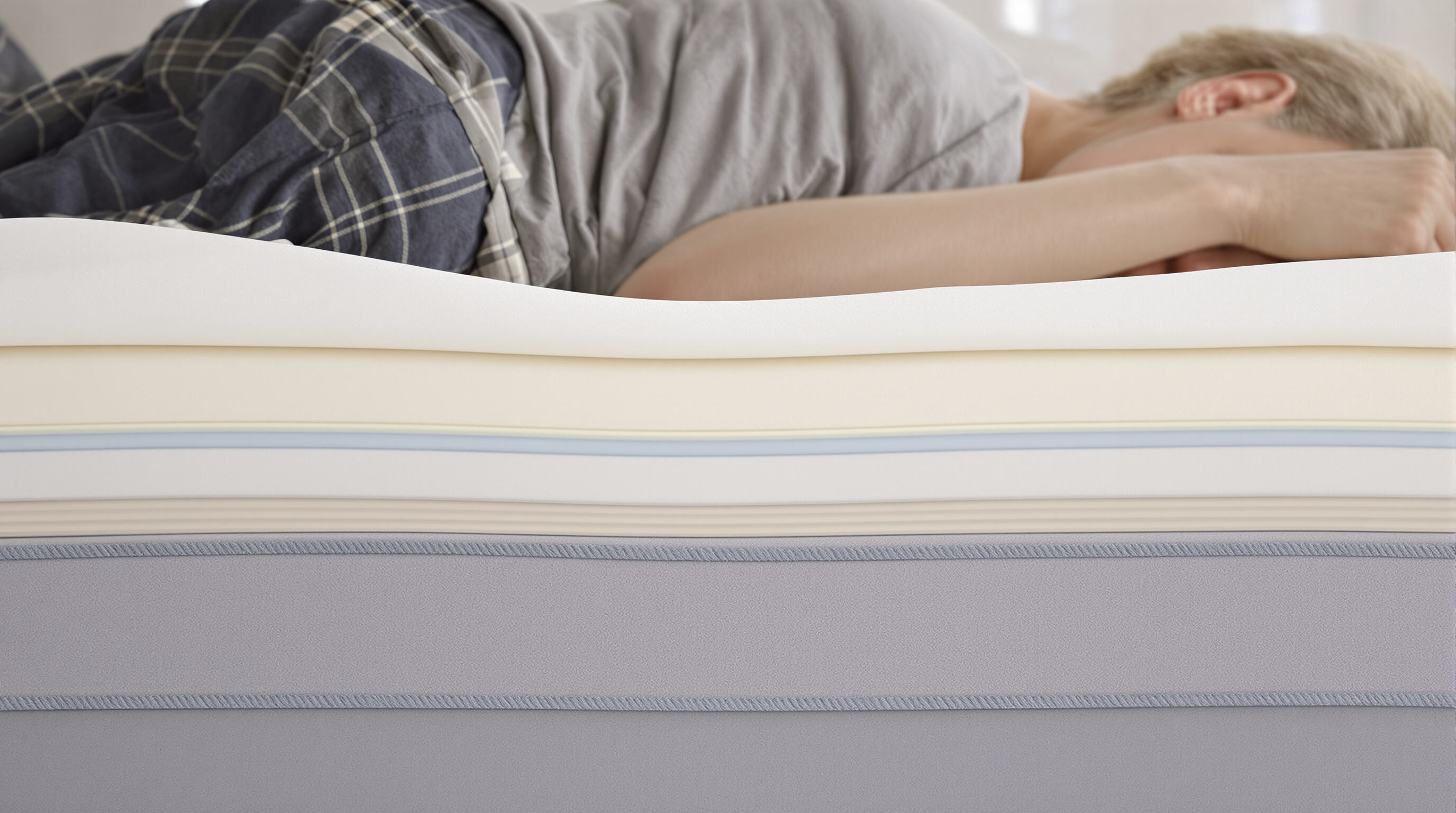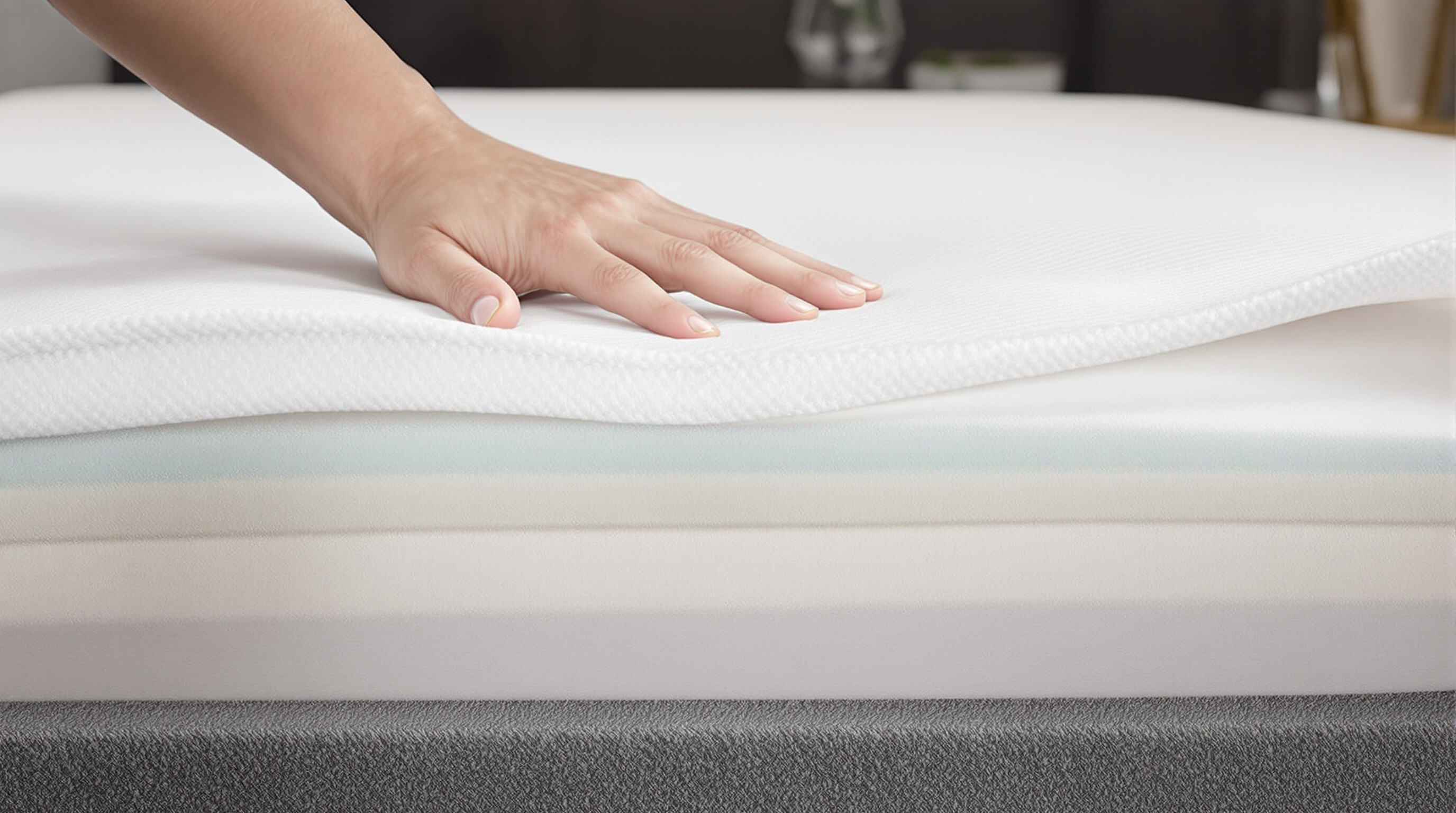Graphite infused memory foam along with plant based latex really mold around pressure points on the body, spreading out weight over roughly 30 percent more area than regular fiberfill stuff we see in most beds these days, as found by various sleep labs. The mattress cover has phase change materials that soak up extra warmth when needed, plus there's bamboo rayon fabric that pulls away sweat from the skin. This keeps body temps right around those ideal 88 to 90 degrees Fahrenheit where people tend to get deeper REM cycles without waking up all night long. All these different layers work together to turn what would normally be hard spots into areas that actually relieve pressure instead. Ortho doctors have noted something interesting too about how much better shoulders and hips fare on these designs compared to standard padding options, seeing about a quarter less compression during testing sessions.
The cushion depth varies between 1 and 4 inches, giving folks different levels of comfort based on their needs. Thinner layers work great for people who sleep on their stomachs since they offer just enough give without being too soft. Most side sleepers find that around 3 inches of memory foam keeps their spine properly aligned during the night. The medium density material stops people from sinking too deep into the mattress which might throw off hip and shoulder alignment something many studies have actually shown. There's also zoned support built in that helps keep the lower back stable without making the whole mattress feel rock hard. Plus, special bands are integrated into the corners so the pad stays put all night long instead of shifting around when someone moves or gets up.
For people dealing with old mattresses, good quality toppers can really make a difference in comfort. About 7 out of 10 users notice better sleep after just a few nights on these things. The benefits last longer too since most toppers actually prolong mattress life somewhere between two and five years by taking the brunt of all that daily pressure we put on our beds. This means saving money instead of buying new mattresses so often. Some of the best ones use high resilience foam that holds up against thousands of squishes, while natural latex options tend to stay supportive for around ten years or so. What makes them work well is the thermo bonded construction which stops everything from moving around inside, keeping the whole thing comfortable without those annoying bumps forming over time.

A good mattress pad can really help take some of the pressure off those sensitive spots where we tend to sink in too much, especially around the shoulders and hips. This is actually pretty important since studies show that about two thirds of people who sleep on their sides deal with some kind of discomfort caused by pressure points according to Sleep Medicine Reviews back in 2023. When manufacturers combine special quilting designs with memory foam technology, they manage to cut down on that intense pressure by roughly one third when compared to just sleeping directly on a regular mattress. The difference makes all the world of difference for folks suffering from joint pain issues or anyone getting up there in age looking for better comfort through the night.
Memory foam that's at least 4 pounds per cubic foot along with natural latex materials conform to the body's shape pretty well because they respond to both body heat and pressure points. These materials adjust much quicker compared to regular padding options out there on the market, which helps stop that annoying sagging effect people often call hammocking when lying down. The special cell structure in latex provides good support right where it matters most around the lower back area, plus it doesn't transmit movement as much across the mattress surface. For folks who tend to toss and turn throughout the night changing sleeping positions constantly, this kind of material really works wonders since it keeps adapting without disturbing partners nearby during those midnight shifts.
In a study from 2023 looking at around 1,200 people, researchers discovered something interesting about mattress pads. Those who used medium firm options saw their chronic lower back pain decrease by almost 30% after just eight weeks. Pretty impressive result if you ask me! People sleeping on these layered support systems also changed positions during the night about 22% less often than others. Fewer shifts mean better neck alignment generally speaking. And when they did MRI scans on volunteers, doctors noticed there was actually less pressure on discs for folks using contoured pads compared to regular flat ones. Makes sense why so many people are switching to these specialized supports nowadays.

For people who get chilly at night, both down alternatives and wool are great choices because they keep warmth in while still letting moisture escape. The down alternative stuff is basically made from hypoallergenic polyester that traps warm air without feeling heavy like actual down does. Wool has this natural ability to pull sweat away from the body and adjust to changing temperatures too. A recent study published by Springer back in 2023 looked into how different materials affect our body's temperature regulation. When compared to regular synthetic materials, these natural options can hold onto heat about 30% better over time. That makes a real difference for folks with arthritis or anyone who struggles when the room gets too hot or cold during the night.
Today's mattress pads often combine phase change materials (those fancy PCMs) along with natural fibers that let air circulate better, so they can handle different seasons comfortably. Bamboo rayon is becoming popular because it actually moves air around more than regular cotton does, which means folks sleep cooler in summer by about 2 to 4 degrees Fahrenheit difference. When winter rolls around, many pads come with wool or silk layers stitched inside that trap warmth without making things feel stuffy. According to some research from The Sleep Foundation looking at bedding for all seasons, roughly three out of four people report staying comfortable throughout the year with these kinds of pads. We've also seen hybrid designs lately where memory foam gets mixed with cooling gels and special cover fabrics that adjust to body heat, showing just how manufacturers are trying to solve problems for people living in various climates across the country.
A good quality overlay can bring back some much needed comfort to old or too firm mattresses simply by adding extra cushioning that takes pressure off sensitive spots while keeping the mattress itself protected from getting worn out. The material in these overlays actually soaks up shocks and spreads body weight around better, which helps slow down how quickly the mattress starts to break down over time. Those non slip pads people put on beds are pretty important too since they stop things from sliding around during the night, cutting down on all that rubbing that eventually tears fabric apart. Tests done across the industry suggest something interesting about what works best for preventing those annoying sags we all hate waking up to. Generally speaking, anything thicker than 5 centimeters seems to do the trick when combined with proper fastening methods according to various studies within the bedding sector.
Mattress pads typically cost $80-$250, significantly less than $800-$1,500+ for a new premium mattress. They extend bed life by 1-3 years, offering 75-90% savings while allowing personalized firmness adjustments. Beyond cost, this delay reduces environmental impact—each mattress replacement contributes to landfill waste and carbon emissions from production and disposal.
When mattress toppers shift around during the night, they mess with how pressure gets distributed across the body and throw off spinal alignment. Non slip bed pads tackle this issue thanks to their rubberized backing that actually sticks to both the mattress surface and the fitted sheet underneath. Tests show these pads cut down on shifting by roughly 83% when compared to regular ones. For people who switch positions throughout the night, this kind of stability makes all the difference. According to research published in 2022 on ergonomics, folks sleeping on pads that stay put reported waking up 27% less often because their bedding wasn't moving around them anymore.
The best non slip bed pads have this cool dual protection system going on. On one level, those silicone dot patterns actually create much better grip than regular cotton pads do. We're talking about friction coefficients around 0.5 to 0.7 microns compared to just 0.3 for plain cotton. Then there are these deep pocket elastic skirts that really hold tight against the mattress. They can resist anywhere from 25 to 50 pounds of pulling force before they start to lift at the corners. For folks looking for top performance, some models come with these special breathable latex backing materials. What makes them stand out is how they keep their grip power without making things feel hot and sweaty. Tests have actually shown these pads last about 40% longer when put through their paces in accelerated wear conditions. That kind of durability makes all the difference over time.
Graphite-infused memory foam molds around pressure points, spreading weight over a larger area than regular materials which improves comfort and reduces compression.
Mattress pads use phase change materials and fabrics like bamboo rayon to absorb excess heat and wick away sweat, keeping body temperatures ideal for deep REM sleep.
Thinner pads suit stomach sleepers with minimal give, while side sleepers benefit from around 3 inches of memory foam for spinal alignment.
Mattress pads absorb daily pressure and prevent mattress degradation, often extending its usable life by 1 to 5 years.
Non-slip pads stabilize mattress toppers, preventing shifting that can disrupt body pressure distribution and spinal alignment during sleep.
 Hot News
Hot News2025-09-04
2025-09-02
2025-09-01
2025-07-08
2025-06-10
2025-11-27